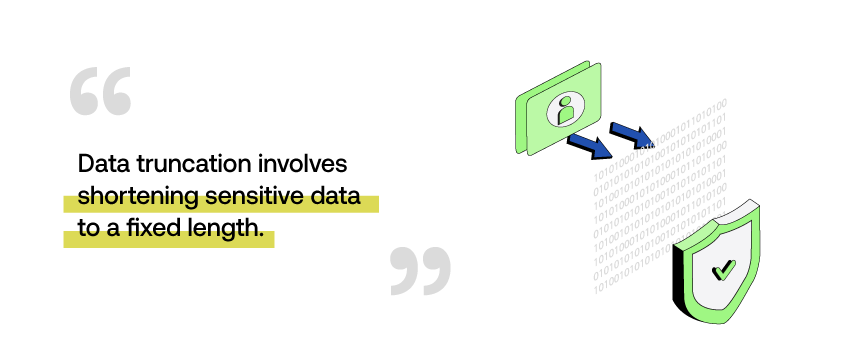
Disclaimer: The information provided in this article is for educational purposes only and should not be considered as financial advice.
We are in the midst of a digital age and security and privacy have never been more pertinent. A method for safeguarding your data that has emerged is “crypto truncation”. This isn’t a term we commonly see, but it’s essentially the use of cryptographic data truncation in the crypto world for information security. We’ll shed some light on what exactly this concept is, the application and possible challenges.
Data Truncation in Privacy

In regards to cryptography and data privacy, data truncation involves shortening sensitive data to a fixed length, often represented as 0s and 1s (binary data). This simplification process makes the data more challenging to decode, therefore enhancing its security.
Data truncation is a powerful tool for safeguarding information. It ensures that sensitive data remains secure by reducing the risk of leaks while allowing for secure storage, transfer, and utilization across various digital applications.
How Cryptographic Truncation Works
As we described, cryptographic truncation simplifies data by shortening it to a specific length. It usually turns the data into a binary sequence. Cryptographic truncation is typically performed by specialized software or algorithms designed to handle sensitive data., such as the Data Encryption Standard (DES).
The trimming is a precise process that involves removing unnecessary bits while keeping the important parts. To do this, it starts from the beginning of the data and only keeps the specified number of bits. These bits represent the core components of the data, containing the most critical information. All unnecessary or extra bits are removed in the process.
Cryptographic truncation is like a lock for your data, making sure it’s kept safe.
Use Cases VS. Risks and Challenges
- Data Protection: Cryptographic truncation is often used to safeguard sensitive information. For example, credit card numbers and passwords, making sure they remain secure during storage and transmission.
- User Privacy: Truncation also plays a role in maintaining user identity privacy, preventing unauthorized access and breaches. By simplifying sensitive data, it makes it less informative to potential attackers and more difficult to hack.
- Compliance: Various industries, including healthcare and finance, use truncation to meet regulatory compliance.
Comparing Cryptographic Truncation with Privacy Techniques
- Data Accuracy: If truncating isn’t precise, it can result in a loss of accuracy, potentially affecting data integrity.
- Security Vulnerabilities: If an attacker gains access to both the truncated and original data, they can still deduce the missing bits, although the chances are low.
- Key Management: Proper encryption and key management are critical to avoid vulnerabilities in systems using truncated data.
- Implementation: To effectively address these risks and challenges, it’s crucial to implement and maintain security measures.
Future Trends in Cryptographic Data Privacy
As technology evolves, cryptographic data privacy and security measures will continue to advance. Blockchain technology, known for its transparency and security, is influencing cryptographic data protection.
The evolution of privacy regulations and compliance standards will further shape how we progress in the digital landscape.
Conclusion
Cryptographic truncation is a pivotal technique in enhancing data privacy. It simplifies sensitive information while maintaining security, making it a versatile tool in many use cases. However, it’s not without some risk. Data precision and the potential for deducing missing bits require careful implementation and consistent security measures.
We can expect giant leaps forward in terms of digital evolution. Technology such as blockchains promise innovative solutions. As data breaches and hackers become more sophisticated, these trends will play a crucial role in safeguarding data in the advancement process.
Related Articles
What is a Hierarchal Deterministic Wallet?
What are Permissioned Blockchains – An Intro to Blockchain Basics
What Are Blockchains and the Tech Behind Them?
Sources
Truncated differential cryptanalysis
0 comments